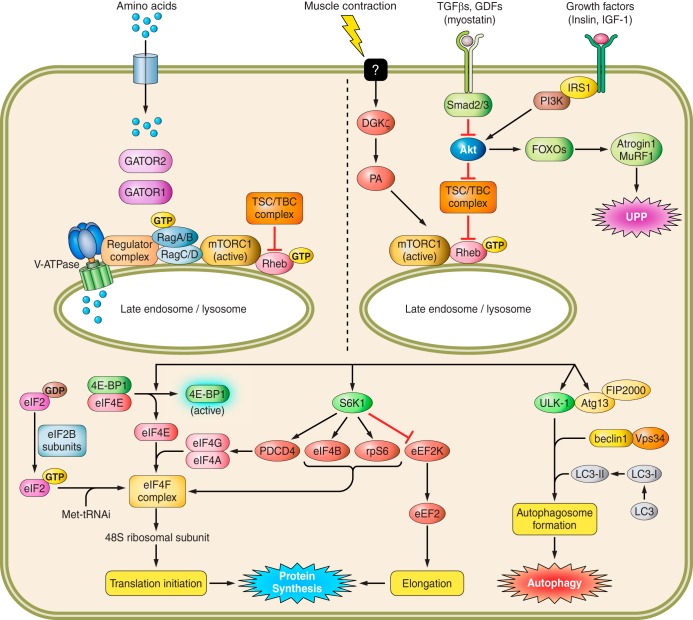Fig. 1.
Pathways modulating skeletal muscle protein balance. See text for definitions. Signals from various anabolic stimuli enter the cell via membrane transporters (i.e., amino acids) or receptors (i.e., myostatin, hormones). Amino acids induce mTOR translocation and activation at the lysosomal surface via the Rag family of proteins and the GTP loading of Rheb. In contrast, TGFβs, GDFs, and growth factors converge at Akt to either activate mTOR at the lysosome via TSC1/TBC complex phosphorylation and subsequent Rheb GTP-loading or enhance proteasome activity [ubiquitin-proteasome pathway (UPP)] and muscle degradation. Upon lysosomal translocation and activation, mTOR phosphorylates several downstream targets, including 4E-BP1, S6K1, and ULK-1. Phosphorylation of 4E-BP1 and S6K1 enhances translation initiation and protein elongation, whereas ULK-1 regulates autophagosome formation and autophagy.

